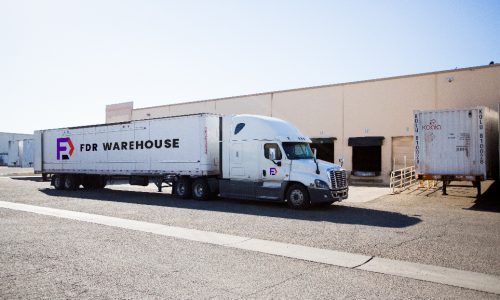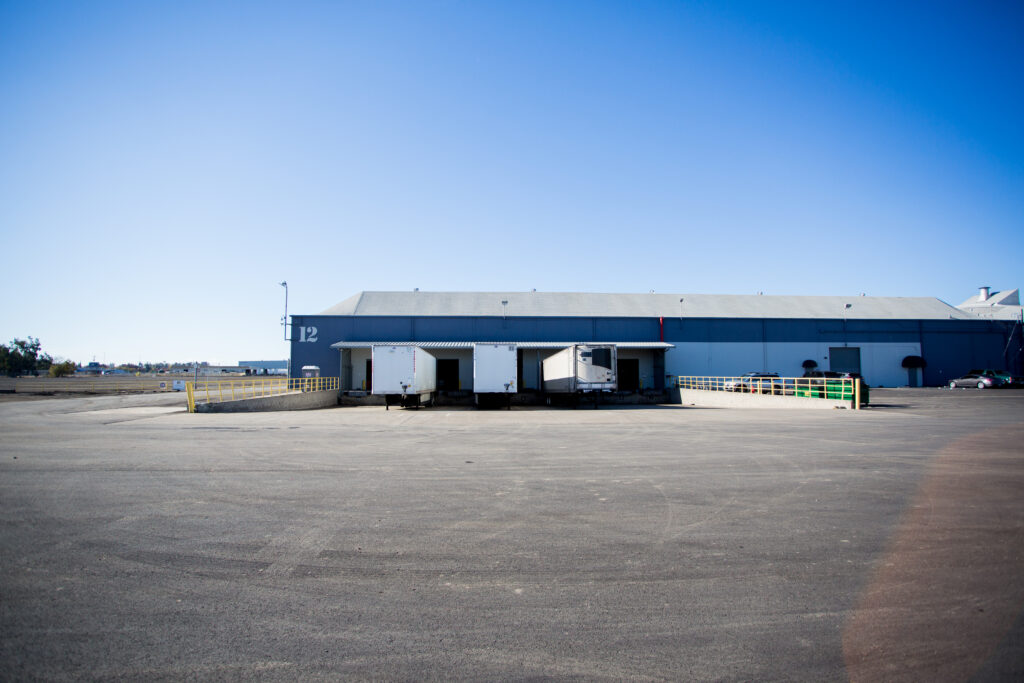What is Cross Docking

VP/COO
“Nowadays, many firms try to delight their customers by reducing the time between customer orders and the time of delivery. Due to this reason, cross-docking has become an interesting logistics strategy in supply chains.” – Neerajie Ahangamage, et al., 2020
When you are a business owner, logistics can be expensive. You must ensure your products are shipped and delivered on time and in full. However, having a large inventory of goods can make it challenging to keep up with demand. This is why cross-docking can be an effective option for businesses that need to move large quantities of merchandise quickly.
Cross docking is a method of shipping that has become more popular over the years. It is a strategy used by businesses with extensive inventories of goods to ensure that they stay up to date with demand and can quickly ship products when necessary.
How Does Cross Docking Work?
Cross docking is a process in which goods are transferred directly from truck to truck or to another mode of transport.
The concept of cross docking is relatively simple. Instead of having shipments arrive at a warehouse and then be processed before being sent out to customers, the shipment is received directly from the truck and immediately delivered to its destination.
The idea is that this process reduces the time it takes for a product to get from its point of origin to its final destination, reducing costs for both the company and its clients.

What Products Can I Cross Dock?
Cross docking is suitable for a wide range of products. These include the following:
- Automobile parts and accessories
- Building materials
- Construction Equipment
- Electrical equipment and tools
- Food items
- Machinery and tools
- Plastics
- Textiles
- + more!
Cross docking is particularly suitable for high-value, low-weight items in high demand. The method is also best suited to products that have a short shelf life or need to be shipped quickly.
Types of Cross Docking Services
You can choose a few different cross-docking services when starting your business.
Full Service Cross Docking
This is the most common type of cross-docking service and includes all aspects of receiving, storing, and shipping products. You will deliver your goods directly to the logistics company. They will keep the goods until they are ready for transport. Then, when a customer places an order, they ship it out as soon as possible without any additional handling by your business or its employees.
Continuous Cross Docking
Continuous cross-docking service is similar to the full-service option but only applies to a specific product type. Products are transferred from one truck to another in a terminal designed for loading and unloading quickly and efficiently.
Continuous cross-docking requires the inbound truck to arrive before the outbound truck, and the inbound truck will wait until all goods are transferred. Commonly, no storage is used with continuous cross-docking.
Manufacturing Cross Docking
Manufacturing Cross-Docking is the process of receiving incoming supplies and items at a central distribution hub, sorting and arranging them for delivery to multiple manufacturing locations, whether in the same facility or an outside facility.
Just what is required for a particular production order is delivered to each manufacturing facility. Cross-docking allows you to quickly turn around large orders like this while saving money on transportation costs.
Distribution Center Cross-Docking
Distribution centers that employ cross-docking services use them as an alternative method of receiving and distributing goods from suppliers or sending them out to customers without investing in expensive warehouse space. This type of cross-docking allows you to receive and distribute goods without investing in expensive warehouse space.
This is especially useful if your company manufactures or distributes products that are only sometimes in stock, such as frozen foods or computers. You can also use cross-docking as an alternative method of shipping out orders from customers.
Benefits Of Cross Docking
Reduces Inventory
With cross-docking, you only need to store your goods in warehouses temporarily. They will only be there for a short time before distribution.
Because cross-docking reduces the amount of time that goods are in storage, it reduces the amount of money spent on inventory. This is because holding onto inventory costs money: you must pay for the space the product takes up, and you must pay employees to manage and move the inventory around.
Minimize Damage and Shrinkage
When you are storing your products, there is a chance that they will be damaged or lost during storage. Cross-docking eliminates this possibility by reducing the time your products are not in use.
Optimize Transportation Cost
Cross-docking is a process that allows you to optimize your transportation cost by performing multiple activities in one place. It’s a great way to reduce the number of shipping steps. Plus, it ensures that your supply chains always have stocks.
Your products won’t go through a traditional warehouse process. When goods arrive at the facility, they will cross-dock them and send them out again. So, you’ll have less waste and fewer unnecessary costs associated with extra storage space and labor hours. Plus, you will have a more streamlined approach to managing inventory levels.
How Does FDR Warehouse Implement Cross-Docking Strategies?
Cross-docking is an ideal solution for businesses that need to manage high inventory volumes. But it’s also useful for companies with more limited quantities. Here are some examples of when you might want to cross-dock your shipments:
- Your current warehouse is at capacity, and you must offload inventory quickly.
- You have a short-term increase in demand for your products, and you want to ensure there’s no lag between when customers place orders and when they receive them.
- You must ensure your inventory is always in the right place at the right time.
- Several products can be shipped in the same box or container, but there’s not enough space for all of them.
- Many shipments are going to the exact location, so combining them would be more efficient.
- You need to manage perishable inventory in an organized fashion and don’t have room for storage.
As a leading provider of warehouse services, our distribution center needs to have a robust and efficient system in place. That’s why we’ve implemented cross-docking strategies—a system that allows us to move goods through our warehouse quickly and efficiently.
We receive goods at the distribution docking terminal designed to maximize efficiency and minimize space usage. Then we sort them into categories and classify them as per the destination. We collect classified goods and move them to the dock, from where we load them onto the outbound vehicles.
This process ensures that goods are shipped on time, which helps us maintain our reputation as an efficient shipping partner.
Cross Docking Services in Stockton, CA: FDR Warehouse

FAQs
What is a cross-docking facility?
A cross-docking facility is a warehouse that allows for the transfer of goods between carriers. Instead of loading and unloading each vehicle individually, cross-dock facilities have specialized docks enabling trucks to drive in and out without stopping or slowing down. This puts your products under fewer people’s control, reducing the risk of loss or damage.
A cross-dock facility typically has three components: an incoming dock, an outgoing dock, and a central warehouse. At the incoming dock, goods are unloaded from trucks and loaded onto pallets. The outgoing dock is where the trucks drop off pallets or load them onto trains or other forms of transportation. The main warehouse houses all the goods before they are sent to customers or another warehouse for further distribution.
What is the difference between docking and cross-docking?
Docking and cross-docking are two terms used to describe the process of taking in a truckload of goods and delivering them to their final destination.
In docking, a truck brings the goods directly to your warehouse and unloads them there. You then store them until they’re ready to be shipped out again.
In cross-docking, a truck arrives at your facility and offloads its cargo onto your storage racks or pallets. Then another truck picks up those pallets or racks and transports them elsewhere—usually back to the same manufacturer or supplier that sent them in the first place.